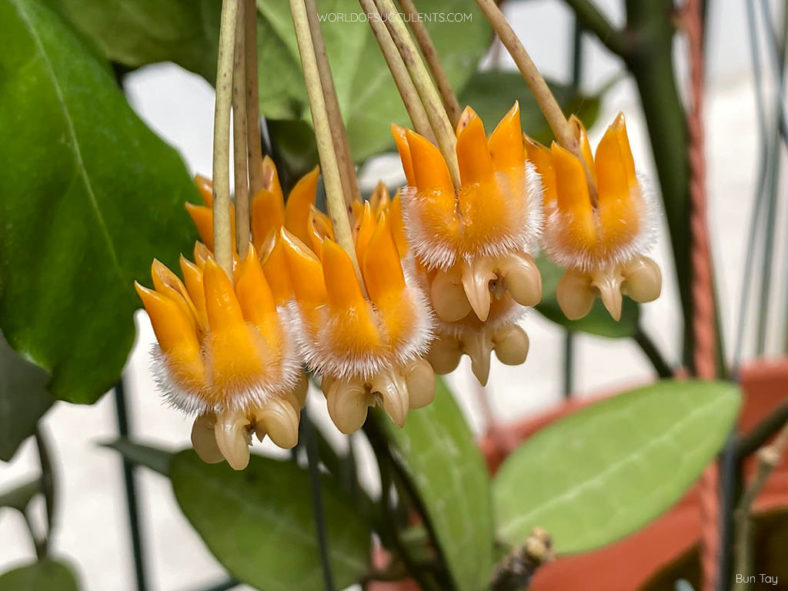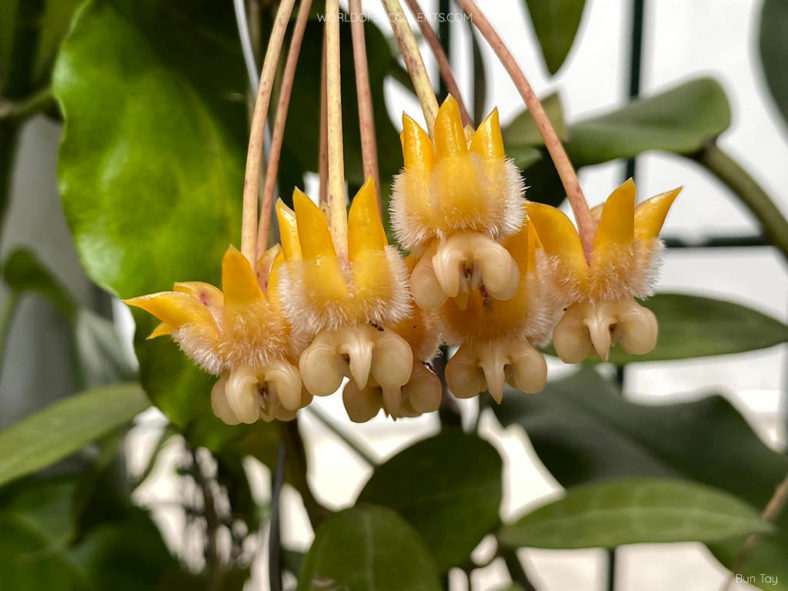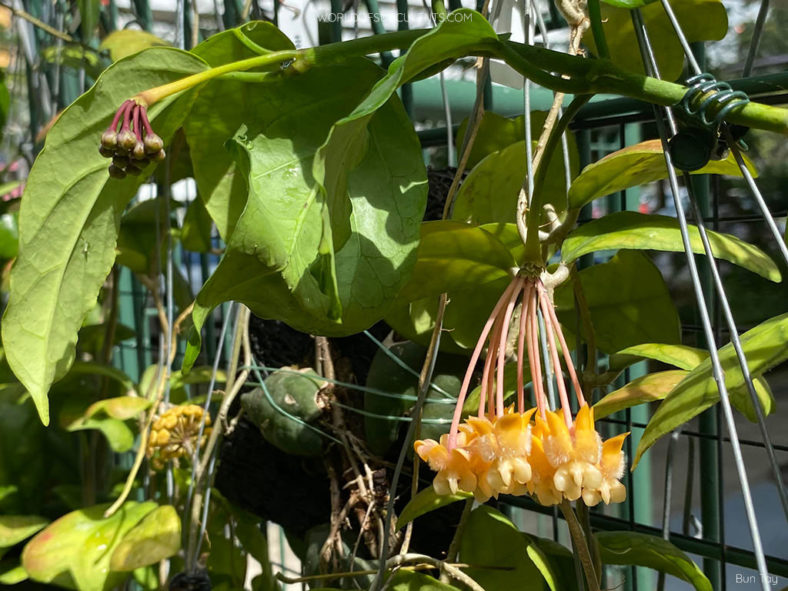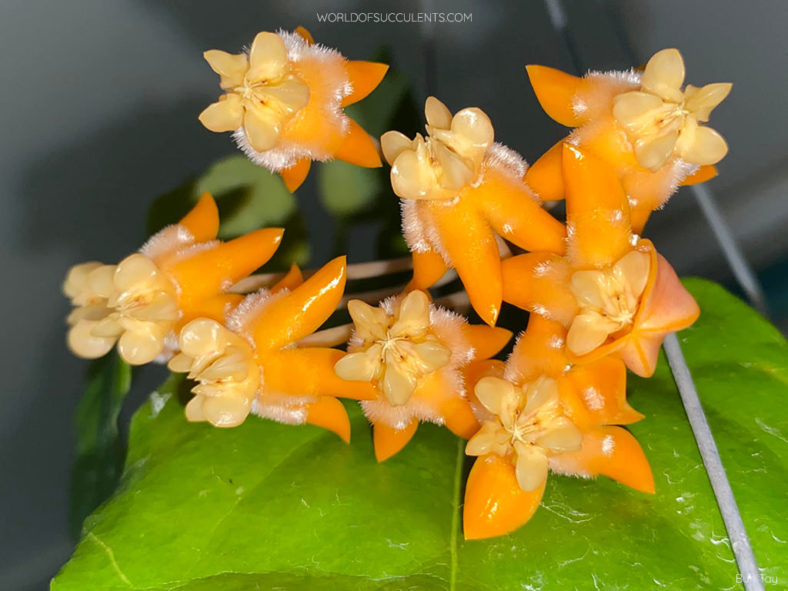Scientific Name
Hoya lasiantha Korth. ex Blume
Synonym(s)
Plocostemma lasianthum, Plocostemma pallidum
Scientific Classification
Family: Apocynaceae
Subfamily: Asclepiadoideae
Tribe: Marsdenieae
Genus: Hoya
Etymology
The specific epithet "lasiantha (lay-zee-ANTH-uh)" means "hairy-flowered" and refers to the corolla lobes that are hairy at the base.
Origin
The native range of Hoya lasiantha extends from southern Thailand through Peninsular Malaysia and Borneo in Malaysia to Java in Indonesia. It grows as an epiphyte on trees in lowland and hill forests, usually in the canopy.
Description
Hoya lasiantha is a bushy plant with drooping branches, thin green leaves with pinnate venation, and attractive flowers with a bright orange reflexed corolla and a pale orange corona. The branches can grow up to 32 inches (80 cm) long. The leaves are elliptical with a rounded base and a pointed apex, measuring up to 8.4 inches (21 cm) long and 4 inches (10 cm) wide. They are attached to the stem by a petiole up to 1.6 inches (4 cm) long.
The flowers appear from spring to summer in clusters of 8 to 14 on peduncles that can reach up to 2.4 inches (6 cm) in length. The flower stalks can grow up to 1.6 inches (4 cm) long.

How to Grow and Care for Hoya lasiantha
Light: H. lasiantha grows well indoors in bright indirect light but will tolerate pretty low light levels. However, it becomes weak and leggy, produces fewer leaves, and may not flower without bright light.
Soil: Whatever soil you plant your H. lasiantha in should be well-draining, provide excellent aeration, and not hold too much water.
Temperature: As a tropical plant, it thrives in warm, moist, humid climates. Keep it away from drafty windows and doorways during the colder months. H. lasiantha can withstand temperatures as low as 40 °F (4.4 °C). USDA Plant Hardiness Zones 11a to 11b, 40 to 50 °F (4.4 to 10 °C).
Watering: Water regularly in spring and summer. Soak the soil thoroughly until the water drains out of the drainage holes. Then, let the soil dry out between waterings. H. lasiantha is relatively dormant and needs only moderate watering in fall and winter.
Fertilizing: This plant is not a particularly heavy feeder. However, it appreciates some extra micronutrients and macronutrients. Therefore, feed with half-strength high-potassium fertilizer every two weeks or so during the growing season.
Repotting: As an epiphytic plant, H. lasiantha has quite shallow root systems and does not require a deep container, nor it needs to be repotted frequently. It prefers growing a bit tight in its container. Therefore, repot in spring if it outgrows its container.
Propagation: You can easily get new plants from your existing H. lasiantha by stem cuttings. Leaf cuttings can be more problematic. The best time to take cuttings is spring or summer when the plant is actively growing. The easiest method of propagation is by layering. Starting this plant from seeds is the simplest but the most time-consuming way of propagation. Sow the seeds in spring or summer in well-draining soil.
Learn more at How to Grow and Care for Hoya.
Toxicity of Hoya lasiantha
H. lasiantha is non-toxic to humans and pets.
Links
- Back to genus Hoya
- Succupedia: Browse succulents by Scientific Name, Common Name, Genus, Family, USDA Hardiness Zone, Origin, or cacti by Genus
Photo Gallery
Click on a photo to see a larger version.


